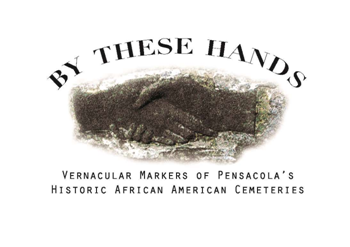Projects, By These Hands

FPAN is pleased to partner with the University of West Florida and John the Baptist Church on a grant project entitled By These Hands: The Vernacular Markers of Pensacola's Historic African American Cemeteries. Explore these amazing "outdoor museums" that feature handmade markers created by local craftsmen and artists, and learn more about the city's historic cemeteries.
Like all historic cemeteries, Pensacola’s historic African American burial grounds are outdoor museums that reflect cultural attitudes and adaptations. The vernacular markers that dot early 20th-century African American cemeteries in Pensacola are not merely physical marks on the landscape - they have a powerful story to tell about the African American community as a whole. The story of Pensacola’s vernacular cemetery markers encompasses individuals, occupations, ideologies, and expressions. Through a series of professional talks and tours and the development of interpretative materials, the story of Pensacola’s African American cemeteries will begin to emerge. By bringing this story forward we will be sharing the story of Pensacola’s historic African American cemeteries and we will also be weaving the threads of our story into an expanding tapestry that tells the story of Florida’s historic African American burial grounds. Looking beyond local significance, Florida’s historic African American cemeteries are threads in the greater story that link us, as Floridians, to a regional, national, and world tapestry.
Click here to learn more about the By These Hands project.
Additional Cemetery Preservation Resources:
Funding for this program was provided through a grant from the Florida Humanities Council with funds from the National Endowment for the Humanities. Any views, findings, conclusions or recommendations expressed ion this website do not necessarily represent those of the Florida Humanities Council or the National Endowment for the Humanities.
